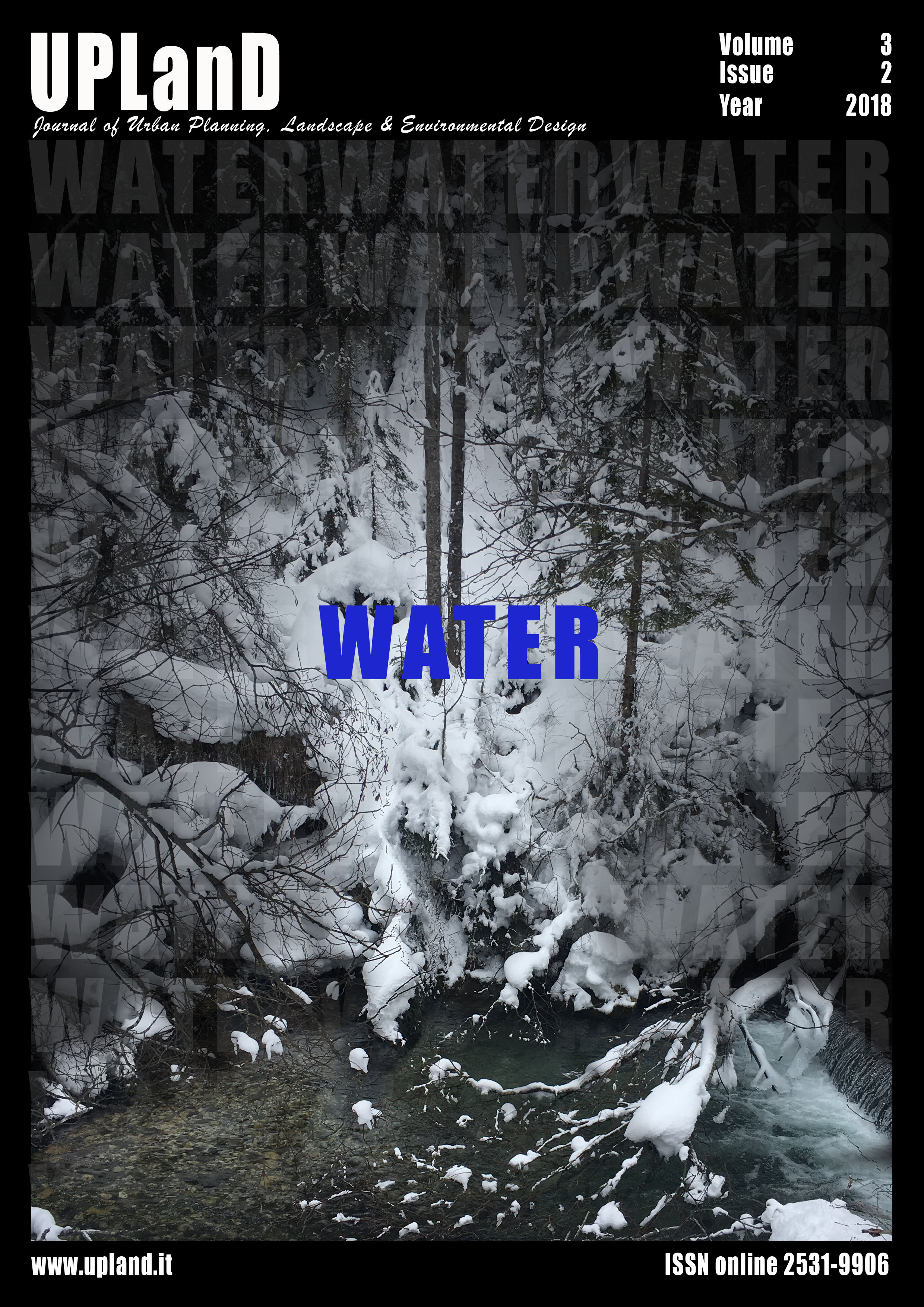Floods and insalubrity as the trigger for city restructuring in Spain: the case of Burgos
Main Article Content
Abstract
If we want to understand the morphological configuration of the urban space of some Spanish cities, it is necessary to research the different types of cartography that exist in the city. Among the many kinds of maps produced over time, we find a type of cartography that is a direct product of the interests on the structure of the city: the maps of civil engineers.
The topographic map of Burgos created by the civil engineers Mariano Martín Campos and Eduardo Lostau in 1894 and their sanitary project are framed within a type of cartography denominated hydrological cartography. These types of maps, which have scarcely been studied, were the result of the approach of bringing water to cities, channelling rivers, or installing sewerage systems.
This is the case of Burgos, where the urban planning was a product of the search for a solution to the floods and the insalubrity problems that had existed for decades, and of a desire, therefore, to restructure the city. In addition, as an added value, this map constitutes the first plan proposed at 1: 1,000 scale and with precise altimetry. The accuracy of this map led the civil engineers to propose it as the basis for a plan of alignments. In this way, this map is presented as the beginning of the internal (i.e., sewerage system and channelled rivers) and external (i.e., streets) restructuring of the city and an example for the rest of Spanish cities with the same problems: floods, restructuring of the streets and sanitation.
Downloads
Article Details

This work is licensed under a Creative Commons Attribution-NonCommercial-NoDerivatives 4.0 International License.
Authors who publish with this journal agree to the following terms:- Authors retain copyright and grant the journal right of first publication with the work simultaneously licensed under a Creative Commons Attribution License that allows others to share the work with an acknowledgement of the work's authorship and initial publication in this journal.
- Authors are able to enter into separate, additional contractual arrangements for the non-exclusive distribution of the journal's published version of the work (e.g., post it to an institutional repository or publish it in a book), with an acknowledgement of its initial publication in this journal.
- Authors are permitted and encouraged to post their work online (e.g., in institutional repositories or on their website) prior to and during the submission process, as it can lead to productive exchanges, as well as earlier and greater citation of published work (See The Effect of Open Access).
References
Archivo Municipal de Burgos, signature 2-505
Archivo Municipal de Burgos, signature PL- 18 -1583
Archivo Municipal de Burgos, signature PL-372
Arnould, J. (1902), Nouveaux éléments d’hygiene. París: Libr. J.B. Baillière et Fils, pp. 1.003. Retrieved from: https://archive.org/stream/BIUSante_90141x1903x49/BIUSante_90141x1903x49_djvu.txt
Capel, H, & Tatjer, M. (1991). Reforma social, serveis assistencials i higienisme a la Barcelona de final del segle XIX (1876-1900). In A. Roca Rosell (ed.), Cent anys de Salut Pública a Barcelona (pp. 31-73). Barcelona, ES: Ajuntament de Barcelona.
Coronas Vida, L. J. (2008). El abastecimiento de agua potable a las capitales de Castilla y León: entre la concesión y la municipalización (1886-1959). In IX Congreso Asociación Española de Historia Económica. doi 10.14295/rbhc.v9i18.448
Geneviève, M.G. (2007). Pour une histoire environnementale de l’urbain. Histoire urbaine, 18, 5-21. doi: 10.3917/rhu.018.0005
Halliday, S. (2013). The Great Stink of London: Sir Joseph Bazalgette and the Cleansing of the Victorian Metropolis. Stroud, UK: The History Press.
Hamlin, C. (1991). The Sanitarian Becomes an Authority. 1859. In International Conference on the History of Public Health and Prevention. Stockholm.
Hamlin, C. (1992). Predisposing causes and public health in early nineteenth century medical thought. Soc. Hist. Med., 5, 43-70. doi: 10.1093/shm/5.1.43
Hauser, P. (1979). Madrid bajo el punto de vista médico-social. Madrid, ES: Ed. del Moral y C. Editora nacional.
Hauser, P. (1913). Geografía médica de la Península Ibérica (pp. 235-236). Madrid, ES: Eduardo Arias.
Hildreth, M.L. (1987). Doctors, Bureucrats and Public Health in France, 1888-1902. New York-London: Garland publishing Inc.
Pogliano, C. (1984). L`utopia igienista (1870-1920). In F. Della Peruta, (ed.), Storia d`Italia. Annali 7. Malattia e Medicina (pp. 589-631). Torino, IT: G. Einaudi editori.
Pulido Fernandez, A. (1902). Sanidad pública en España y ministerio social de las clases médicas. Madrid, ES: Est. Tip. Enrique Teodoro.
Real Consejo de Sanidad. (1901). Cuestiones fundamentales de Higiene Pública en España. Madrid, ES: E. Teodoro.
Rodger, R. (1996). A Consolidated Bibliography of Urban History. Aldershot, UK: Scholar Press.
Rodríguez Ocaña, E. (1994). La salud pública en España en el contexto europeo, 1890-1925. Revista de Sanidad e Higiene Pública, 68(0), 11-27.
Rodríguez Santillana, J.C. (2002). Saneamiento y espacio urbano (Burgos 1870-1920). Burgos, ES: Dosoles.
Sgobbo, A. (2017). Eco-social innovation for efficient urban metabolisms. TECHNE Journal of Technology for Archi- tecture and Environment, 14, 337-344. doi: 10.13128/Techne-20812
Smith, F. B. (1979). The people´s health 1830-1910. Canberra, AU: Australian National University Press.
Sussman, G.D. (1977). Enlightened Health Reform, Profesional Medicine and Traditional Socety: The Cantonal Physicians of the Bas-Rhin, 1810-1870, Bull. Hist. Med, 51, 565-584. doi: 10.1017/CBO9781139381185.011
Virgili Blanquet, Maria Antònia (1979). Desarrollo urbanístico y arquitectónico de Valladolid: 1851-1936. Valladolid, ES: Ayuntamiento de Valladolid. doi: 10.7419/162.11.2014
Villanova, J. L. (2011). Dionisimo Casañal y Zapatero: Del catastro a la topografía (1864-1878). In C. Montaner; F. Nadal and L. Urteaga (eds.), Cartografía i agrimensura a Catalunya i Balears al segle XIX. 2011 (pp. 209-223). Barcelona, ES: Institut Cartogràfic de Catalunya. doi: 10.14198/INGEO2011.56.11
Wohl, Anthony S. (1983). Endangered Lives: Public health in Victorian Britain. London, UK: Dent. doi: 10.1017/S0963926800007148

